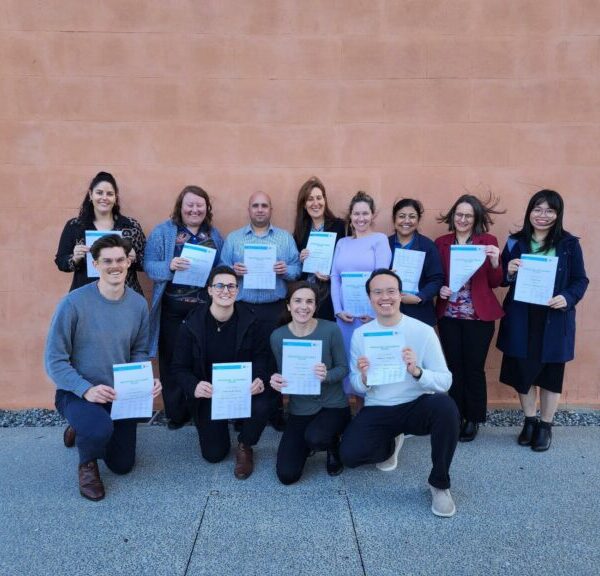Leaders: Could we please just get this done quickly?

Educators across all sectors are pressed for time. Here’s how we can manage one constant drain on our attention, Leaders: Make meetings meaningful.
How many meetings have you attended that you can truly say were a productive use of everyone’s time and achieved their purpose?
How many meetings have you run yourself that achieved their purpose? Would the attendees agree?
Most meetings follow a traditional format that hasn’t evolved with the modern workplace. But fear not, a few simple tweaks to your meeting style can lead to more productive gatherings.
Meeting frustrations for attendees
You’ve probably heard these common frustrations about meetings:
-
- “We didn’t need this meeting.”
-
- “This could have been an email.”
-
- “The decisions were already made.”
-
- “Nothing will come of this.”
-
- “This is so boring.”
-
- “Why bother coming on time?”
-
- “Why does it have to be scheduled now?”
-
- “We’re just going over the same points.”
-
- “Why don’t we just put it to a vote, then?”
-
- “Won’t that person just pipe down?!”
Several of these issues can be resolved by asking: Is a meeting really necessary?
Alternatives to meetings
Leaders should consider alternatives like delegation, mentoring, workshops, or one-on-one conversations with team members. The use of technology for asynchronous interaction such as focused email threads, chat programs, surveys, shared documents, rosters and graphic organisers can allow team members time to think and participate at a time of their choosing and to their desired extent of participation.
Is the meeting happening just because it’s on the calendar? Some managers hold meetings simply because it’s the norm or because they find it easier than other forms of managing or delegating. However, a meeting should never be an end in itself. Meetings are not suited for disseminating large amounts of information or reporting without the opportunity for team discussion. The meeting must have a clear purpose and achieve its objectives.
The best meeting objectives are:
1. To generate ideas,
2. To make a group decision, and
3. to share sensitive or urgent information.
Meeting frustrations for leaders
As a leader, you may have faced issues such as poorly allocated meeting places and times, directions to deliver someone else’s bad news or frustrations with attendees.
Sluggish, unprepared, dominant, missing, or late attendees can make meeting discussions off-topic, irrelevant, or impossible! Perhaps the worst outcomes of such meetings are the a reversal of the decision afterward, a need to have another meeting, or the “real” meeting happening elsewhere.
Small changes for a big difference in meetings
First and foremost, it’s essential to recognize that a meeting belongs to the entire team, not just the leader or chair. The true measure of a meeting’s success lies in its outcomes, not in how smoothly it ran. It’s a democratic process that encourages free discussion, values diverse opinions, and ensures decisions are made thoughtfully. Encourage all team members to actively participate and discourage rushing to decisions or stifling opposing viewpoints. One major change to make is for the leader to abdicate from the Chair position.
Leaders, sit back and watch
The role of the chair is critical in maintaining an efficient meeting. While chairs hold authority, they should refrain from advocating a particular interest. Their objective should be impartial management of time and speakers, ensuring the meeting stays on course. The chair must encourage free discussion while maintaining control, using various cues such as tone, questions, and body language.
When it comes to choosing a chair, it’s important to find someone who can manage the meeting objectively and encourage open discussion. The chair shouldn’t be overly involved in decision-making or introduce decisions that have already been made. Sitting back while the team discusses an issue allows the leader to come through at the end and make the decision, rather than informing the team of a decision already made, or asking for approval of their idea, which can make questions and ideas from the team seem like criticism.
And don’t be secretary either!
Ideally, the leader should not be chair, or secretary. Minutes should capture the essence of the team discussion, objectively recording who said what, not just the final decisions. Technology can aid in this process, allowing attendees to follow the flow of conversation with projector or whiteboard notes. This can also help quell the repetition of arguments, especially from the same person. Use action items to track decisions made and to follow up previous meetings’ items.
The power of a well-structured agenda
Agenda items are best framed as questions, with each having a designated time estimate in minutes, not clock time. Start with important items that require brainstorming or debate, and save routine matters for the end, or via email. Apply time limits for speakers, announced by the chair or displayed on a screen or clock, to keep speaking time fair and focused. Encourage a culture of meeting preparation by getting straight to the issue and not repeating information that was required reading.
A meeting agenda should establish context, provide a stimulus, allow interaction and idea-sharing, produce tangible outcomes, measure accountability against objectives, and encourage reflection and action steps.
Final tips
To best generate ideas and to make a decision as a group, it is crucial to create an environment where alternatives can be raised and discussed with the right thinking frame and time before criticism is allowed. Using De Bono’s thinking hats, even if informally through a competent meeting Chair, will encourage the team to genuinely contribute. Establishing criteria before a decision is made should help focus contributions to the issue at hand rather than personal standpoints. Asking one or more members of the team to adopt a Devil’s Advocate position is an equally valuable initiative which prevents groupthink.
Incorporate these strategies, and your meetings can become a more productive use of your team’s time, knowledge and ideas. Next time you gather your team, consider these best practices to make your meetings more efficient and effective.

Dr Hugh Gundlach is a lecturer and researcher in the Faculty of Education, The University of Melbourne. He recently presented this content at the ACEL National Conference in Brisbane as one of the 2023 ACEL New Voices in Educational Leadership Research. He likes meetings that stay on topic, produce outcomes, run to time, and that have chocolate biscuits.
This article was originally published on EduResearch Matters. Read the original article.
Popular

Workforce
Quality
Research
When did it start to go wrong?
2025-12-18 08:00:46
by Fiona Alston

Economics
Provider
Quality
Jobs News
Policy
Practice
Workforce
The year in review: 2025's most impactful ECEC news stories and shifts
2025-12-16 07:32:18
by Fiona Alston

Quality
Provider
Workforce
Practice
Celebrating 10 years of workplace excellence as the sector’s leading Employer of Choice
2025-12-19 07:00:09
by Fiona Alston














